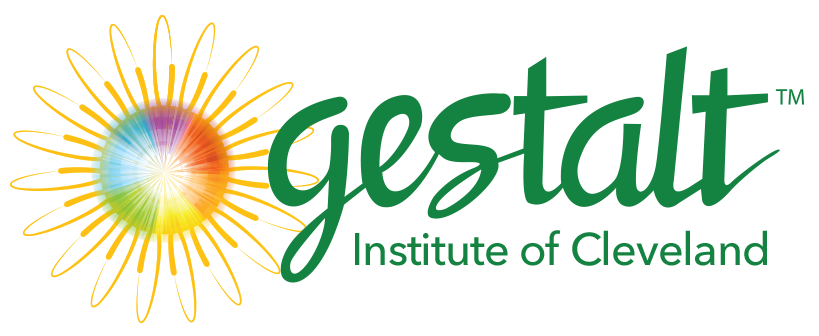 Image 1 of
Image 1 of


Sensing & Repatterning 3.0: An Embodied Approach to Working with Introjects Integrating Gestalt Therapy and EMDR
In Person Workshop
Date and Time:
February 21 - 23, 2025
Friday: 3:00pm - 6:30pm ET
Saturday: 9:30am - 6:30pm ET
Sunday: 9:30am - 1:30pm ET
Location: In-Person at the Gestalt Institute of Cleveland
Berea, OH (near Cleveland)
*A negative CoVid test is required for this workshop.
Please bring proof of a negative test taken within 24 hours of the first day of the workshop.
Tuition: $475.00
Early bird discount, pay $425.00 by January 20, 2025
Use discount code: SENSING
Continuing Education: 14.0 CEs
Facilitator: Renee Jennings, MA, MSW, LISW-S
In Person Workshop
Date and Time:
February 21 - 23, 2025
Friday: 3:00pm - 6:30pm ET
Saturday: 9:30am - 6:30pm ET
Sunday: 9:30am - 1:30pm ET
Location: In-Person at the Gestalt Institute of Cleveland
Berea, OH (near Cleveland)
*A negative CoVid test is required for this workshop.
Please bring proof of a negative test taken within 24 hours of the first day of the workshop.
Tuition: $475.00
Early bird discount, pay $425.00 by January 20, 2025
Use discount code: SENSING
Continuing Education: 14.0 CEs
Facilitator: Renee Jennings, MA, MSW, LISW-S
In Person Workshop
Date and Time:
February 21 - 23, 2025
Friday: 3:00pm - 6:30pm ET
Saturday: 9:30am - 6:30pm ET
Sunday: 9:30am - 1:30pm ET
Location: In-Person at the Gestalt Institute of Cleveland
Berea, OH (near Cleveland)
*A negative CoVid test is required for this workshop.
Please bring proof of a negative test taken within 24 hours of the first day of the workshop.
Tuition: $475.00
Early bird discount, pay $425.00 by January 20, 2025
Use discount code: SENSING
Continuing Education: 14.0 CEs
Facilitator: Renee Jennings, MA, MSW, LISW-S
This refreshed iteration of Sensing and Repatterning adds a transpersonal dimension and explores introjection beyond Gestalt’s dated metaphor of digestion, presenting introjects as relational phenomena involving the nervous system, bodily tissue and fascia, epigenetics, subtle energies, ancestral patterning, and the unified field. Through a dynamic synthesis of somatic Gestalt Therapy and EMDR (Eye Movement Desensitization and Reprocessing), embedded patterns of limitation have the potential to be liberated, bringing greater coherence within our individual selves and to our relationships with others and the world.
As creative adjustments, introjects can be understood as expressions of our innate capacity to participate in the infinitely continuing creativeness in nature (Laura Perls, Living at the Boundary). From a transpersonal perspective, this creativeness is written in the body and mirrors the field itself. We are interconnected fractals of the whole. Some introjects, however, become chronic or traumatic patterns of suffering and isolation from the whole, tethering us to static narratives without relevant meaning to the here and now.
True to Gestalt’s emphasis on experiential learning, participants in this workshop will explore their own introjects through didactic presentations, large and small group process, and experiential exercises. Gestalt concepts such as aggression, the cycle of experience, the fertile void, awareness, holism, phenomenology, resistance, and the unified field will be explored, as will EMDR’s notions of negative cognitions, memory, and the Adaptive Information Processing model. Come prepared to co-create and dive deeply!
Learning Objectives:
Participants completing this workshop will be able to:
1.Identify 5 similarities between EMDR and Gestalt Therapy Theory;
2.Describe the AIP (Adaptive Information Processing) model of EMDR;
3.Distinguish 3 differences between Gestalt Therapy Theory and EMDR;
4.Define Introjects and Introjection;
5.Describe the Gestalt Cycle of Experience and its relation to introjection and reprocessing;
6.Define Perls’ metaphor of digestion regarding introjection;
7.Practice the use of bilateral modulation;
8.Describe how the body is the unconscious;
9.Identify the sensory components of memory;
10. Explain how the vagal system is related to introjection;
11.Discuss how introjects can be ‘negative cognitions’;
12. Describe how Gestalt’s concept of aggression relates to the AIP model of EMDR; and
13. Explain similarities between Gestalt and EMDR theory regarding innate wholeness and resiliency.
